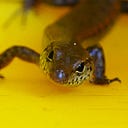Member-only story
Nature, Knowledge and Us
Understanding the world through citizen science
A couple of hours north of Brisbane, the Great Sandy National Park protects an expanse of coastal heathland, paperbark swamp, dune lakes, and beaches. It is home to rare species like Ground Parrot, Regent Honeyeater and a group of ‘acid frogs’, species of Litoria and Crinia that are adapted to the acidic waters of the lakes.
In August 2018, biologists and citizen scientists visited the Cooloola area of the park to survey its flora and fauna. It wasn’t the first BioBlitz in the Great Sandy region; nearby K’gari — Fraser Island had been surveyed two years earlier, adding many new records to the list of the island’s plants and animals. At Cooloola, specialists and interested locals fossicked through the grass, swept the vegetation and scanned the trees. Working together, they turned up a host of species new to science.
Citizen science has a long history. In earlier days, it was a pursuit of gentlemen who had the wealth and resources to indulge their interests. Some amassed vast collections out of curiosity. Others recorded their observations as a way of making sense of the vast and bewildering natural world. Among them was parson-naturalist Gilbert White, who lived in rural Hampshire, southern England. His letters to fellow naturalists Thomas Pennant and Daines Barrington…
